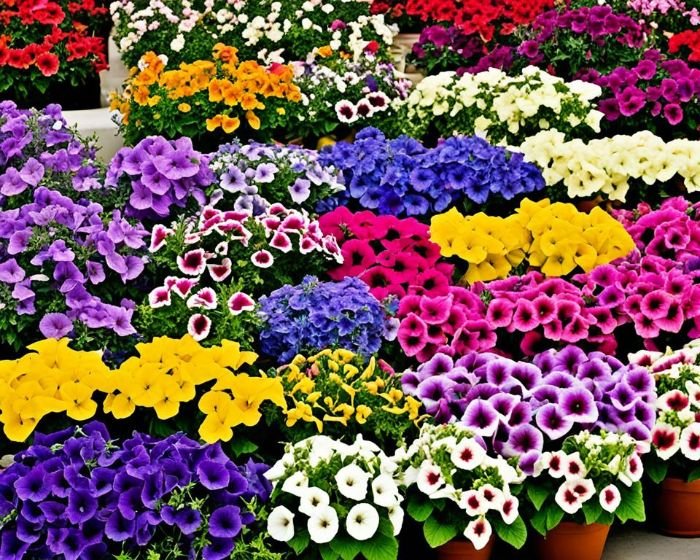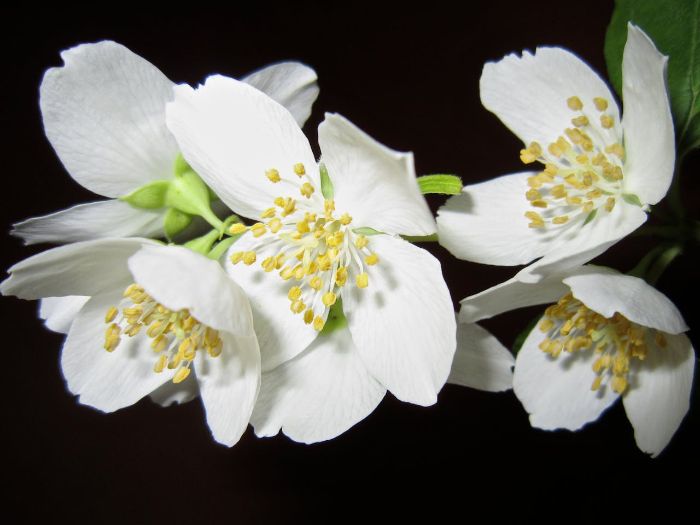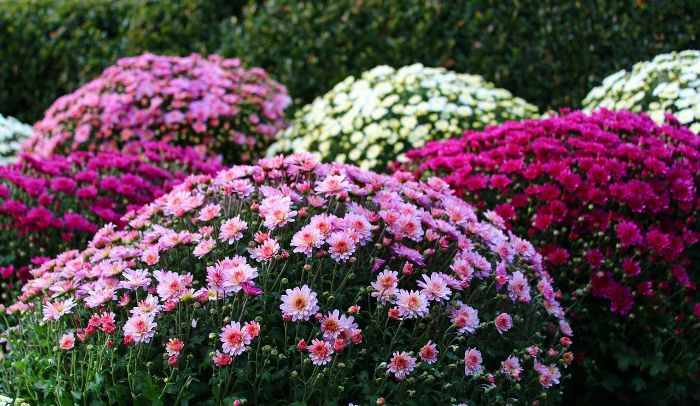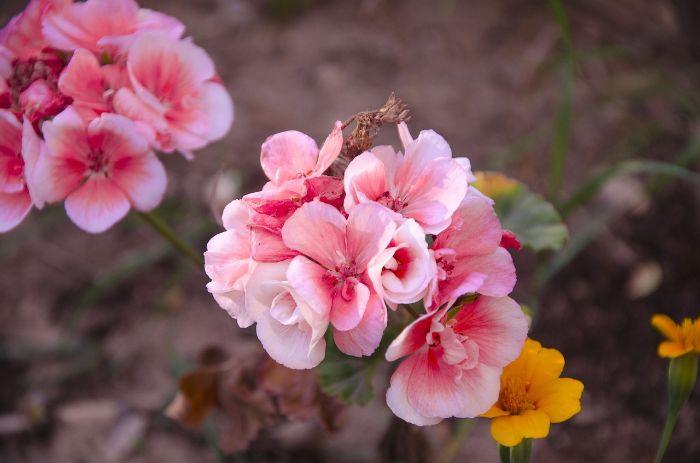Ready to fill your garden with vibrant colors? Then petunias are your best bet! These annual flowers shine with their beautiful blossoms all summer. But with so many types out there, how do you pick the best ones?
We’ve got you covered! In this guide, we’ll help you find the perfect petunias for your garden. We’ll talk about different types, your garden’s needs, and how to choose based on what you like. You’ll learn everything you need to know to have a stunning garden.
Whether you’re new to gardening or an expert, petunias are a great choice for a beautiful garden. Let’s dive into the colorful world of petunias and learn how to make your garden thrive!
Key Takeaways:
- Choosing the right petunia varieties is essential for a thriving and beautiful garden.
- Petunias come in a wide range of types, each with its own unique characteristics.
- Assessing your garden conditions and considering factors like sunlight, soil type, and watering needs will help you select the best petunia varieties.
- Aesthetic considerations such as color selection and flower form play a significant role in creating a visually stunning garden.
- Proper planting and care techniques, as well as pest and disease management, are essential for the success of your petunias.
Table of Contents
About Petunias
Petunias have been loved in gardens for decades. Their bright colors stay vibrant all summer. You can find them in beds, borders, and hanging baskets. It’s key to pick the best kind for your garden’s look and needs.
Overview of Petunia Popularity in Gardens
Petunias are very popular in gardens. They come in many colors and look beautiful. Plant them together or with other flowers for a stunning look. They’re easy to grow and fit well in different garden styles.
Importance of Choosing the Right Variety
Choosing the right petunia is crucial for your garden’s success. The right one will look good and fit well in your garden. It ensures they grow well in your soil and get the sunlight they need. You can also pick them for their smell or for baskets.
Types of Petunias
Petunias offer a wide range of colors and growth habits. You can find different types of petunias for your garden. Each type adds its own beauty through unique colors and textures. Let’s look at some popular petunia types:
Grandiflora Petunias
Grandiflora petunias have big, bright flowers with frilled edges. They are a top pick for vivid garden color. These petunias bloom in many colors, making a stunning garden view. But, they need more care since their flowers are fragile in harsh weather.
Multiflora Petunias
Multiflora petunias grow low with many small flowers. They do well in wet weather, adding color even on rainy days. These petunias are perfect for many places in your garden, like beds or pots. They bring a lot of color to any space.
Milliflora Petunias
Milliflora petunias are small and delicate, great for edges. They have tiny flowers that make your garden look pretty. Their small size fits well in compact spaces. You can choose from many colors to enhance your garden’s look.
Spreading (Wave) Petunias
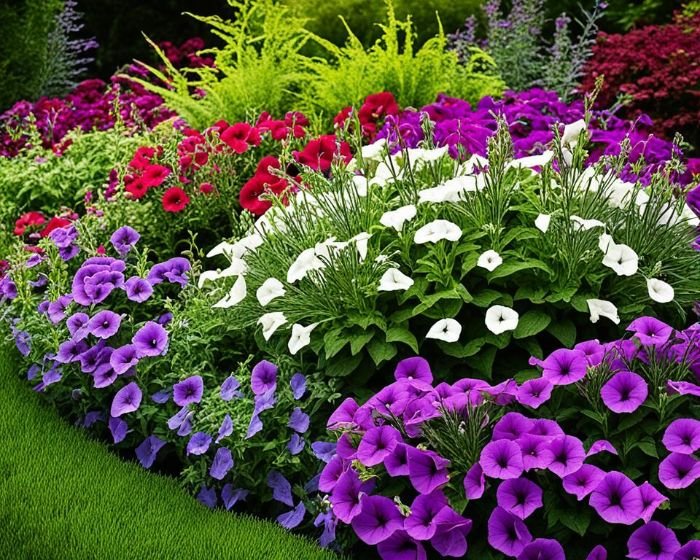
Spreading petunias, also called wave petunias, spread up to four feet. They’re good for covering ground or spilling out of pots. These petunias are easy to care for and bring vibrant colors to any garden. They are ideal for lush, colorful garden scenes.
Knowing about different petunia types helps you pick the best for your garden. You might love grandiflora’s bold flowers or spreading petunias’ trailing beauty. There’s a petunia for every gardening style.
Assessing Your Garden Conditions
It’s key to check your garden before you choose petunias. Think about your soil, sunny spots, and how much water plants need.
Soil Type and Preparation
Petunias like soil that drains well. Know if your soil is sandy, clay, or loamy. If it’s clay, you can add compost to help it drain better. This is good for the plant roots.
Sunlight and Shade Requirements
Petunias must get the right amount of sun to do well. They need at least six hours of sunlight each day. Without enough sun, they grow tall but may not flower much. Pick sunny spots in your garden for them.
Watering Needs and Irrigation
Water is important for petunias, but they don’t like too much. Wet soil can harm them. So, keep the soil just moist but not soaked. Using a drip system or soaker hoses can help. They water the roots directly without making the ground too wet.
Selecting Petunia Varieties Based on Conditions
Choosing the right petunia varieties for your garden is key. It’s vital to think about your outdoor space’s conditions. Different petunias need different settings to thrive. We will look at the best petunias for full sun, those for partial shade, and drought-tolerant kinds.
Best Petunias for Full Sun Gardens
If your garden gets a lot of direct sunlight, pick petunias that can take the heat. There are special varieties for full sun gardens. They can handle the intense sunlight and stay beautiful all summer. Choosing these petunias means your garden will be full of vibrant colors.
Varieties Suitable for Partial Shade
For gardens with spots that don’t get full sun, there are petunias that thrive. These petunias are okay with less light and can still look great. Choose these for shaded areas to bring color and beauty. Your garden will be colorful and inviting in every spot.
Drought-Tolerant Petunia Options
Living where there’s not much water or in drought zones? Picking drought-tolerant petunias is smart. They need less water and still look beautiful. This choice helps you save water and enjoy lovely flowers. They’re great for water-saving gardens and dry places.
Aesthetic Considerations
Choosing petunia varieties for your garden is a big deal. You can pick colors that fit your garden’s style. There are petunias with one or two layers of petals. Some types are perfect for hanging baskets, making your garden look more full and vibrant.
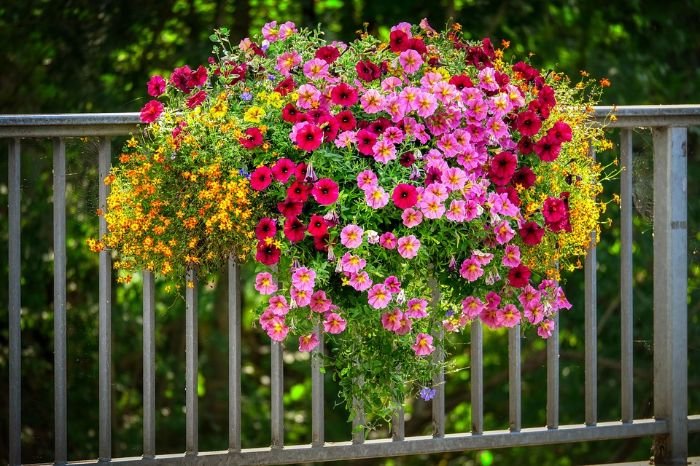
Color Selection for Garden Design
Color is crucial when picking petunias for your garden. They come in many colors to match your garden’s look. Think about what colors you already have. Then, choose petunias that go well with those or choose ones that stand out.
For a simple, elegant look, pick petunias of the same color but in different shades. This brings a calm feeling. If you want a lively garden, pick colors that are opposite on the color wheel.
Remember to think about the seasons, too. Pick petunias that change colors as the seasons change. This way, your garden will look beautiful all year round.
Single vs. Double Blooms
Picking between single and double blooms is another choice. Single blooms have a traditional beauty. They are one flower surrounded by petals. They make garden beds look timeless and lovely.
Double blooms have lots of petals, making them look fancy. They bring drama and color to your garden. They are great for adding life to pots and hanging baskets.
Petunias for Hanging Baskets and Containers
Petunias work well in hanging baskets and pots for a flowing look. They grow downwards, covering the space with vibrant color.
Choose varieties that are meant to trail. They are smaller and fit well in pots. They add a lot of color to your garden. Plus, they are easy to care for.
Popular Petunia Varieties for Specific Needs
Choosing the right petunias for your garden matters a lot. It all depends on what you want. Do you want vibrant colors, pleasant smells, or have a small space? There are petunia types perfect for each situation.
Top Picks for Vibrant Color Displays
Vibrant colors make any garden stand out. Petunias come in many bright shades like red, purple, and orange. These colors will make your garden pop and look beautiful.
Best Varieties for Fragrance
Do you love a sweet-smelling garden? Some petunias smell as good as they look. Try varieties like ‘Supertunia® Bordeaux’ or ‘Supertunia® Vista Bubblegum’. They are lovely and smell amazing.
Petunias for Compact Spaces
Even if you have a small area, you can still enjoy petunias. There are types that grow compactly, perfect for small places. Look for ‘Wave® Purple Classic’ or ‘Suncatcher® Pink Lemonade’. They bring beauty to any small garden.
Planting and Care Tips
It’s key to plant petunias correctly for them to thrive. With the right approach, you’ll see lovely blooms all season.
Proper Planting Techniques for Petunias
Dig a hole a bit bigger than the plant’s root ball. Make sure the plant sits level with the soil around it. Fill the hole with soil, pat it down, and water well.
Fertilizing and Mulching Tips
Feed your petunias with a slow-release, balanced fertilizer. Water them after fertilizing. Repeat every 4-6 weeks.
Use mulch to keep soil moisture steady and stop weeds. Put mulch but not right against the plants to avoid too much wetness.
Pruning and Deadheading for Continuous Blooms
Prune often to cut away the dead parts. It helps new growth and keeps disease away. Good air flow is important.
Remove old flowers to make room for new ones. This keeps your petunias looking nice and flowering more.
Follow these tips to make your petunias healthy and beautiful all season. This includes planting right, fertilizing, mulch, and looking after your plants.
Managing Common Pests and Diseases
Identifying Common Petunia Pests
Like all plants, petunias can get pests and diseases. Knowing common pests helps you act early. This makes it easier to keep them under control. Common pests for petunias are aphids, spider mites, and whiteflies.
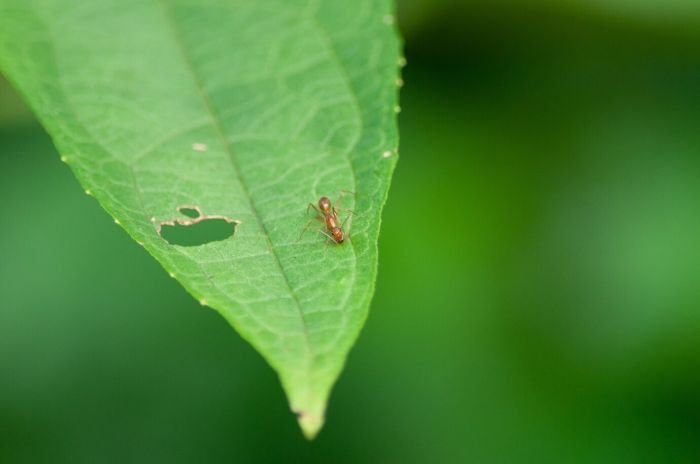
Natural and Chemical Control Methods
There are chemical and natural ways to control pests on petunias. For natural options, you can bring in helpful bugs like ladybugs. They eat aphids and other pests. Using organic soaps or neem oil is also effective.
If the natural ways don’t work or the problem is big, you might need chemicals. Use these with care. Always follow the product’s instructions. Pick chemicals that are safe for petunias. But, remember, chemicals are the last choice. Use them carefully to protect the plants and our world.
Conclusion – Enhancing Your Garden with Petunias
Petunias are a great choice for any garden. They bring beauty and a lot of benefits. You can make a bright, beautiful garden that fits your style with the right petunias.
Think about your garden’s soil and sun needs. This helps you pick petunias that will do well in your garden. There are petunias for every light condition and water level.
After picking the right petunias, plant and care for them well. Know how deep to plant them and how far apart. Also, give them the right food and keep them trimmed to bloom more.
Pests and diseases can be a problem. Find and stop petunia pests early. You can use natural ways to protect your petunias. Sometimes, you might need to use chemicals to keep your plants healthy.
Add beauty and joy to your garden with petunias. Choose the best types and care for them well. Your garden will be a colorful, happy place all summer that everyone will love.
FAQ
Why are petunias popular in gardens?
Petunias are loved for their bright colors and how they bloom all summer.
Why is it important to choose the right petunia varieties?
Choosing the right petunias ensures they fit your garden well, look nice, and meet your needs.
What are the different types of petunias?
There are four types: grandiflora, multiflora, milliflora, and spreading/wave petunias.
How can I select petunia varieties based on aesthetic considerations?
Think about choosing colors that work with your garden. Also, you can look at single or double blooms and choose hanging basket types.
Are there popular petunia varieties for specific needs?
Yes, you can find petunias for bright colors, smells, and for small spaces.
How can petunias enhance my garden?
With the right care, petunias bring beauty and color to your garden all summer.






